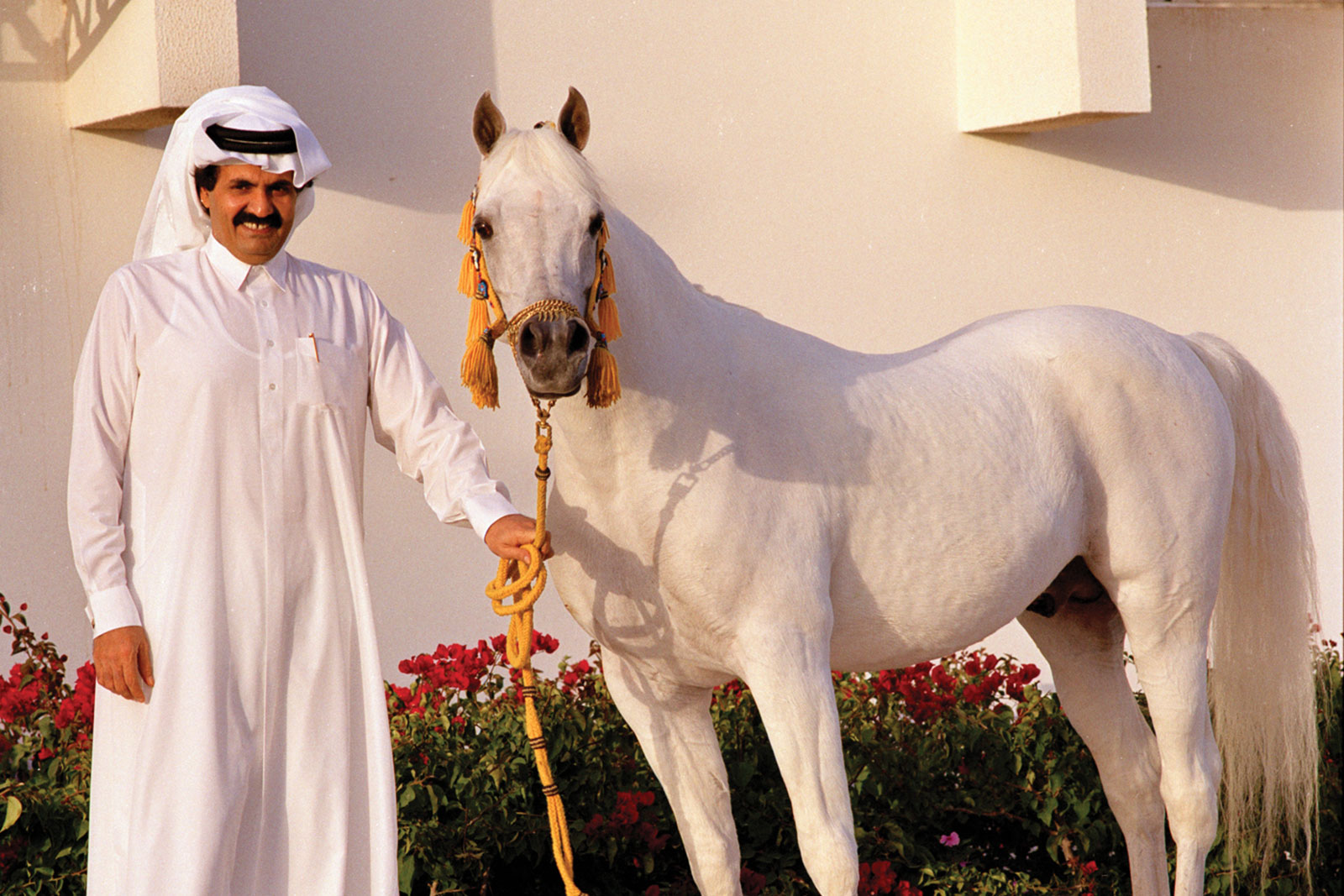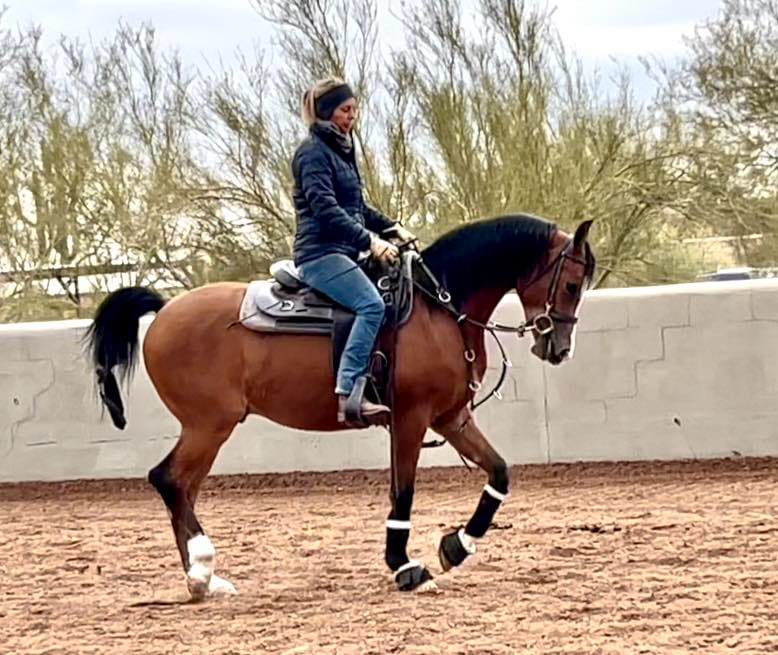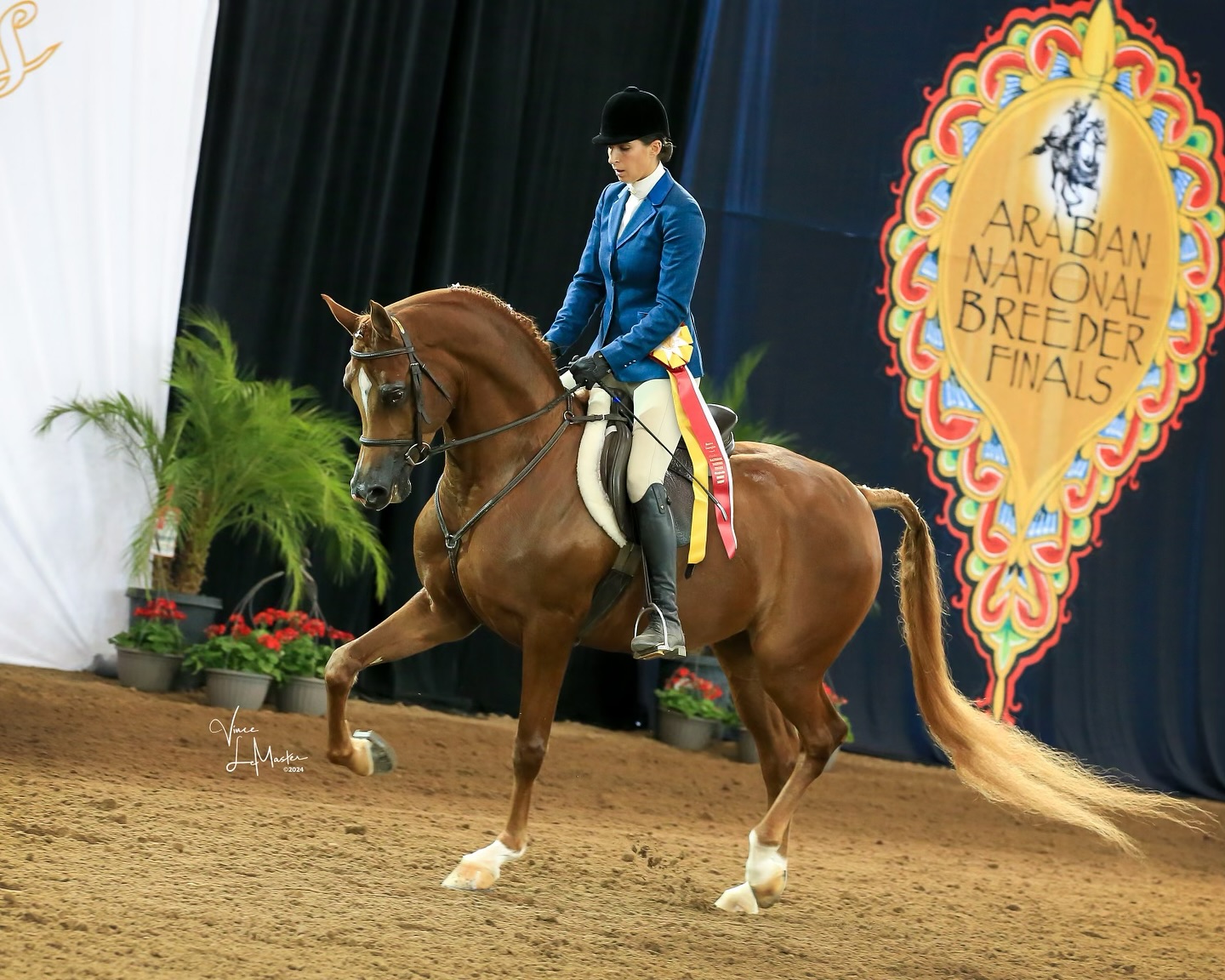By Mike Wilson
As seen in the 2024 Winter issue of Arabian Horse World
Arabian horses are renowned for their beauty, grace, and distinctive characteristics. They are often showcased in various competitions and shows, where judges carefully evaluate their conformation and overall presence. Two prominent categories within Arabian horse shows are the Arabian Performance Halter and Arabian Halter/Breeding classes. While both classes focus on evaluating the physical attributes of the horse, there are notable differences in the criteria judges consider. This article aims to provide a comprehensive comparison of what judges look for in Arabian Performance Halter classes and Arabian Halter/Breeding classes.
Arabian Performance Halter Classes:
Arabian Performance Halter classes emphasize the horse’s suitability for specific athletic disciplines and its overall presence and carriage. The primary focus is on evaluating the horse’s conformation, movement, and ability to perform. Judges in Performance Halter classes assess the following key factors:
1. Conformation: Judges carefully examine the horse’s physical structure, including its balance, proportions, bone structure, and overall correctness. They look for a well-balanced body, strong legs, correct angles, and harmonious overall conformation.
2. Athleticism: Performance Halter classes prioritize horses with athletic potential. Judges assess the horse’s ability to move freely and perform with agility and grace. The horse’s walk and trot are evaluated for fluidity, reach, impulsion, and suspension.
3. Presence and Attitude: Judges evaluate the horse’s overall presence and attitude in the show ring. They look for horses that display confidence, charisma, and a positive work ethic. The horse should project an aura of willingness, engagement, and attentiveness to its handler.
4. Suitability for Performance: Judges consider the horse’s conformation and athleticism in relation to its potential for specific performance disciplines such as dressage, jumping, or western riding. Horses that exhibit the characteristics most appropriate for their intended discipline receive higher scores.
Arabian Halter/Breeding Classes:
Arabian Halter/Breeding classes focus on evaluating the horse’s conformation and breeding potential. These classes aim to identify horses that embody the ideal Arabian breed standards and possess the qualities desirable for future breeding. Judges in Halter/Breeding classes consider the following aspects:
1. Breed Standards: Judges evaluate how closely the horse adheres to the Arabian breed standards. They assess the horse’s head, neck, body proportions, overall balance, and correctness according to the breed’s ideal conformation. Horses that closely resemble the breed standard are considered more desirable.
2. Structure and Proportions: Judges analyze the horse’s bone structure, body proportions, and overall balance. They look for harmonious angles, well-set limbs, a strong back, and an overall appearance of strength and elegance.
3. Correctness and Soundness: Horses in Halter/Breeding classes must exhibit soundness and correctness in their movement. Judges assess the horse’s walk, trot, and overall mobility for fluidity, balanced rhythm, and correctness of footfall. The horses feet and legs are to be taken into consideration during the evaluation process. The correctness of the feet and legs are directly related to a horses mobility and extremely important when judging for breeding. It is imperative that we reward the positives and acknowledge breeding faults in this divison.
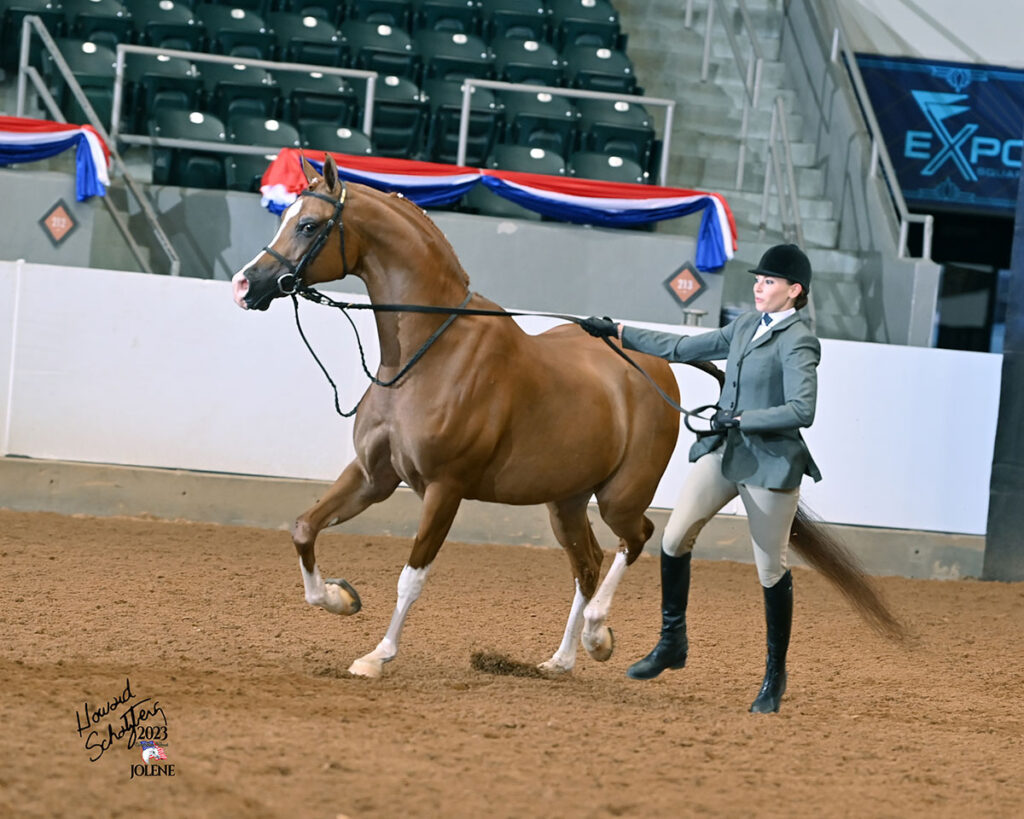
In summary, while both Arabian Performance Halter and Arabian Halter/Breeding classes focus on evaluating the physical attributes of Arabian horses, their criteria differ significantly. Performance Halter classes prioritize the horse’s athleticism, conformation in relation to specific performance disciplines, and overall presence and attitude. On the other hand, Halter/Breeding classes emphasize adherence to breed standards, structural correctness, soundness, and breeding potential. Understanding these differences is crucial for horse owners, handlers, and breeders to ensure their horses are appropriately prepared and presented for the respective classes. By aligning their training and breeding strategies with the specific evaluation criteria, participants can enhance their chances of success in these competitions and contribute to the preservation and improvement of the Arabian breed.
There are specific guidelines and rules that judges follow when evaluating horses in Arabian Performance Halter classes and Arabian Halter/Breeding classes. These guidelines ensure consistency and fairness in the evaluation process. While the specific rules may vary slightly between different Arabian horse show organizations there are very specific diferences in the way Performance Halter class’s are Judged and rules that govern the class’s.
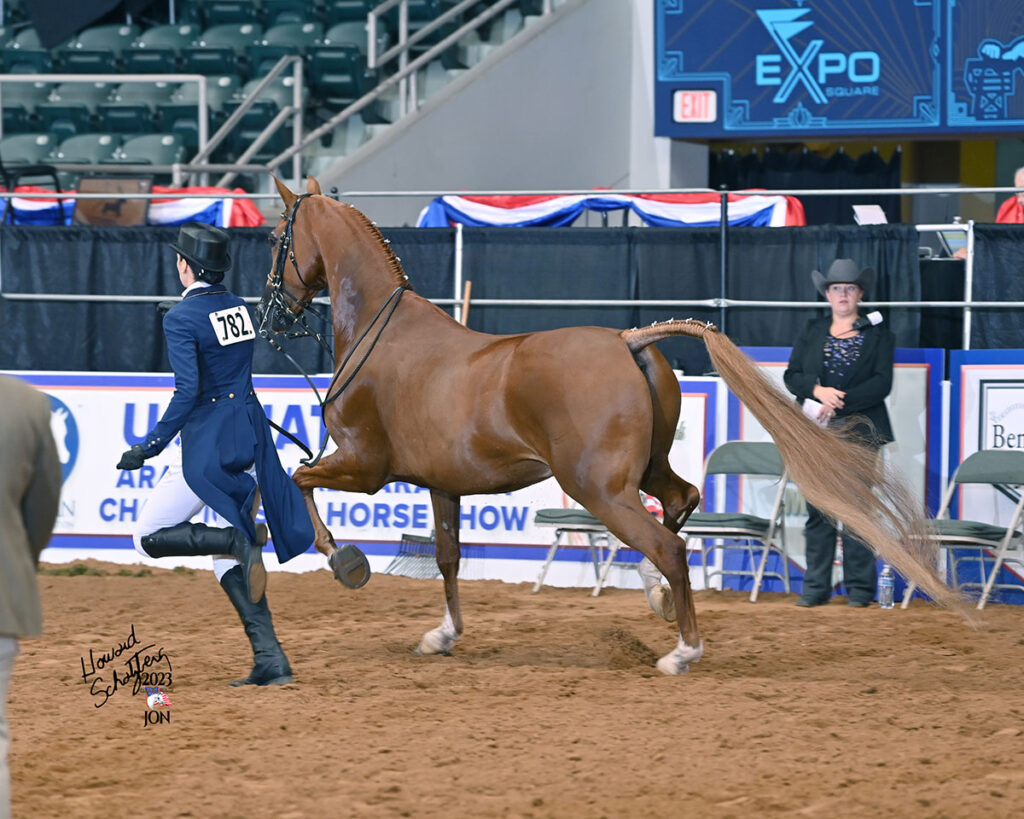
Performance Halter Defined
There are many specific differences in how the horses are to be presented that make the Performance Halter division much different than the Breeding In-Hand division.
Horses are to be presented in a relaxed and dignified manner with their weight distributed squarely on their feet, not stretched. No attention getting devices are to be used and horse’s will be eliminated and excused for; crouching, cowering, buckling at the knees, sweating, trembling, racing backwards or sideways to escape their handlers or other behavior indicating fear, stress or intimidation.
Judges evaluate the horse’s movement and performance to assess its overall quality and suitability for its intended use. While the primary focus of these classes is on conformation, movement is a very essential aspect of the evaluation.
The walk is evaluated for its regularity, fluidity, and ground-covering stride. Judges look for a relaxed, purposeful walk with a clear four-beat rhythm. The horse should move smoothly and cover ground efficiently. Judges assess the horse’s trot for elasticity, suspension, balance, and engagement of the hindquarters. The horse should exhibit a smooth, rhythmic, and ground-covering trot with good reach and impulsion. In addition, Judges will look for the horse’s ability to extend and collect its gaits. Extension refers to the horse’s ability to lengthen its stride, demonstrating power and reach. Collection refers to the horse’s ability to bring its hindquarters more under its body, demonstrating balance and engagement. The horse’s capacity to transition smoothly between these two states is paramount. The horse should demonstrate a willingness and ease in transitioning between gaits. The horse’s ability to travel straight and maintain a steady line is considered in the judging process, a horse should not show any tendency to drift or veer off-course. Straightness is indicative of the horse’s balance, suppleness, and overall correctness of movement. The horse should exhibit a natural and effortless flow, with all body parts working together in a coordinated manner. A horse with correct movement that complements its conformation and demonstrates athleticism is more likely to receive higher scores.
The versatility of the Arabian horse is unquestionable and the Performance Halter divisions present an avenue for horses to be judged according to their specific discipline. Although Performance Halter and Breeding In-Hand are run and adjudicated differently, the goal is the same; and that is simply to reward horses that are conformed correctly and exhibit exceptional movement for their intended use.
Arabian Performance
Halter Score Card
Athletic Structure
Breed Type
Quality, Balance, Substance Neck & Shoulder
Back, Loin and Hip
Legs & Feet
Movement
Half-Arabian Performance
Halter Score Card
Athletic Structure
Quality, Balance, Substance Neck & Shoulder
Back, Loin and Hip
Legs & Feet
Movement
We are always looking for great Arabian horses. These two classes offer different avenues to the same outcome; to find the horse that has most correct conformation, Arabian type and exhibits athleticism. Whether it be for the breeding shed or for the performance arena, the outcome of these two classes is the same.
- Mike Wilson




